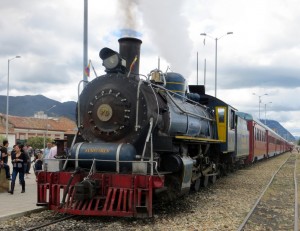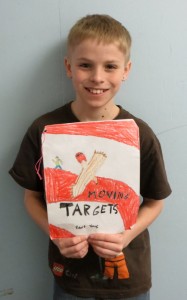In the Comments section below you will find writing plans developed by All Write! class participants. These plans include visions participants have for their classrooms as well as methods and timelines for carrying out those visions. All class assignments are posted so that they will be available for others. Sharing useful ideas, strategies, and activities can help make us all better instructors of writing.
Archive for Robert Young
All Write! Website Reviews
In the Comments section (below) of this post you will find websites that are useful for writing instruction. These are provided by the dedicated professionals who were participants in the All Write! class. You will find the URL for the site as well as a review. Feel free to respond to the reviews as well as to share them with colleagues.
All Write! Book Activities
This is the first of three blog posts that will focus on sharing resources for teaching writing. The activities posted as comments come from participants in the All Write! class that took place on June 26 in Eugene, Oregon. These activities are Six Traits related. Here’s an example:
Trait: Ideas/Content
Focus: Clear and focused writing
Book/Author: The Secret Knowledge of Grown-Ups by David Wisniewski
Publisher: Harper Trophy
ISBN: 0-06-443753-1
Summary: This creative book takes simple rules that adults make up such as “Eat your vegetables,” “Comb your hair,” and “Don’t play with your food” and provides imaginative, humorous explanations.
What you need: Paper, pencils, file folders or large construction paper to make folders
What you do: Read a couple of entries from the book. Then, as a class, identify a school rule (e.g No running in the halls) and write the “Official Reason.” Next, brainstorm a list of possible “Real Reasons” for this rule using the book as a model. Choose one of the reasons and show how this could be written as a short, focused narrative. Have students think of a rule (school, home, community) and go through the process themselves. Use folders to display finished copy: “Rule #” on the tab, “Official Reason” on the outside, and “The Truth” on the inside. Share completed folders then display outside the classroom for others to see.
Summer Writing
“Use it or lose it” the old saying goes. And we know it’s true. That’s one of the reasons we develop summer reading programs: to reduce the “summer slide” that takes place when kids don’t read. It works, too. (www.nysl.nysed.gov/libdev/summer/research.htm)
Why can’t we stop the “summer slide” in writing as well by developing summer writing programs? We can. The program you create can be as simple or complex as you want. I prefer simple.
In a simple summer writing program, kids will need three things:
1. Something in which to write (writing logs)
2. Something to write
3. An opportunity to celebrate their writing
Do you have your students bring in notebooks at the start of the year? If so, have you used them all? If not, there’s your summer writing logs. If notebooks are not available, you can create writing logs by simply stapling lined paper together and adding covers of construction paper. Or, of course, you can use any other bookmaking method you know about.
Provide students with options of things to write. What areas did you cover? You can make a list of them in the front of the logs, and add directions and/or samples. Some examples of writing areas include:
- Poetry (include specific types, e.g. acrostic, free verse, haiku, etc.)
- Letters (create a class sample to show format)
- Slice of Life stories (personal narratives)
- How-Tos (directions for doing something)
- Curiosities (questions about the world)
- Research (answering questions, providing information)
- Fiction (stories, plays, scripts)
- Journaling (day-to-day happenings)
Celebrate the efforts your young writers make. Invite them to bring their writing logs to school when it starts in the fall. At that time, provide them with class opportunities to share what they have done.
But wait; more than likely, you won’t have the same students again. That’s why it’s important to collaborate with your colleagues. Do it together with your colleagues who teach a grade level above and a grade level below you. Better yet, make it a school-wide program. Create a writing culture that extends beyond your classroom and the walls of your school.
Imagine this: It’s the first day of school and your new students, in addition to their class supplies, bring their summer writing logs. Over the next week or so, students share some of their work—a story, some poems, questions they had and the answers they found, letters they wrote (and the responses received)—with the class.
Communication is important for this to work: communication with colleagues, with the kids, and with their parents. Send a note home at the end of the year explaining what you’re doing. Encourage parents to write with their kids, and to make sure the writing logs are returned in the fall.
Will all the kids participate? Hardly. But if you can get a few, or even one, then you can show by sharing the value and the fun of writing. The next year there will be more, and the next year even more. And this will help you create a true writing community in your classroom and your school.
Don’t Forget the Steam Trains
The steam engine transformed transportation in the United States. Locomotives using this innovative engine were introduced in this country during the 1830s and made it possible to move large amounts of people and goods effectively. Horses, which had previously done the job, became out-dated. So, too, would the steam locomotive after the turn of the century when first electric and then diesel locomotives were developed.
I carried these tidbits of history with me as I boarded the Turistren in Bogota, Colombia for a Sunday outing to a salt mine in Nemocon, a town to the north. The locomotive and fourteen cars had the classic styling of the 19th century trains that coursed their way across the growing U.S. Colorful passenger cars with rounded roofs and lined with windows. Massive locomotives complete with powerful driving wheels, cowcatchers and brass bells.
As our train gathered steam and made its way out of the Sabana Station, we were soon transported to another time, a simpler time when travel took longer and people didn’t even mind. The mood inside the car was festive, with excited talk and laughter interrupted by the pulsing beat and rich melodies of the musicians who drifted from car to car.
But it was outside the windows that drew my attention, not to the sights of the city or the rolling green hills of the countryside, but to the people who stood, transfixed, as the train passed. Young and old, male and females, car passengers, bicyclists, people walking their dogs or viewing from their balconies. Some people waved, some just watched, but all were interested in the procession as it passed.
So were the animals. Dogs tipped their heads and barked, horses looked up from their grazing, cows trotted, and chickens flew at the sight of the train and the sound of its whistle.
The way the train engaged the spectators interested me. Here was this old-fashioned, out-dated mode of travel, and people couldn’t take their eyes off it. Nor could the animals. They were all truly engaged.
Which, of course, made me think about teaching and learning. Engagement is the key to both of them. You can’t teach anything unless you first engage the learners. The same goes with learning: you can’t do it unless you are engaged.
Now think about your classroom for a moment. Are your students engaged? What is it you do to engage them?
There are many ways to engage learners, some old, like movement and music, and some new, like wikis and blogs and smartboards. Are some better than others? Sure. And even the best of them aren’t effective for all the students. That’s the challenge of teaching: finding ways to engage all students.
New methods of engagement are coming out all the time. Teachers are inundated with them. I hope you will try the ones that make sense for you and your students. But I also hope you will use the old ones, too, the ones that have been around and that you have found to be helpful in engaging students.
Just remember the steam trains: old and out-dated, but still with the power to engage.
Down Time?
Okay, so my posts have been a bit sporadic this last month. I have a reason: travel. Colombia, to be exact. My son’s living down there, so I visited him and we did some exploring of the country.
So, what’s this have to do with writing? Plenty! Travel, or for that matter, any type of experience, is fodder for writing. Going places and doing things provide the foundation for finding out more (= research) and/or sharing the experiences through the written word.
There’s lots to write about from my recent trip: the bustling metropolis of Bogota, population eight million; the predawn hike up 1,100 steps to the church atop Monserrate on Easter weekend; a steam train ride to the famous salt mine in Nemocon.
I could write about visiting Medellin, the city of “eternal spring.” That’s an improvement of what it used to be: the home of the country’s most infamous drug lord. I could also write about visiting the small islands located in the Carribbean that we visited: San Andres and Providencia. We had plenty of experiences there: hot humid weather, interesting foods, snorkeling around a sunken ship and coral reefs, and seeing all kinds of wonderful fish, including rays and barracuda. On the smaller island (Providencia) we rented bikes and rode around the island, and had money stolen on an “empty” beach while we swam.
So, while I was having a grand time in new places, I was also gathering information and experiences to write about. I have plenty of notes and lots of pictures to help me when I’m ready to write. It may be weeks, months, or even years.
Ridgeview Room 16
Had a great time on Friday meeting with fourth graders at Ridgeview Elementary School. What an interesting and enthusiastic group of writers! Ms. Baron has done a great job encouraging and supporting your use of words. And your questions? Always my favorite part.
I’ve got a question for you. What are you going to write about next? Are you going to create a story (non-faction) or will it be something real (faction), an incident that actually happened or a topic you researched and want to share what you discovered?
Feel free to share your answers. Just write in the Comment box below. Make sure to click the Post Comment box when you’re done. You can also post any questions you have for me. I’d be happy to answer.
The Great American Write-Around
Would you like a great cooperative writing activity that can engage and motivate your students to think and create? Try a write-around.
To conduct a write-around, organize your students into groups of four or five and arrange them either around a table or with their chairs in a circle. Provide an opening line, which all students write on their papers.
Examples of opening lines:
Tired and hungry, the lost dog stood in front of the broken-down cabin.
He/she stepped over the body and walked to where she/he stood in the doorway.
“We’ve waited an hour,” he/she said, “so I don’t think the school bus is coming today.”
She/he awoke to the sound of a shutter banging against her/his window, but the house had no shutters!
The family gathered around the table became silent when the clock struck twelve.
He/she crept closer to the sound of the whimpering.
The airplane flew lower and lower, with no airport in sight.
After students have written the opening line, give them a prescribed time (2-5 minutes) to continue the story. When the time is up, students pass their papers clockwise to the next student, who reads the paper and continues the story for the prescribed time. Continue this process until the papers return to the original writers, who have a chance to complete the story.
Invite students to share their completed stories.
What’s so good about this activity? Lots.
- Students have the opportunity to be a part of several writing pieces.
- Effective writers model first-hand.
- Students get practice writing various stages of a story.
- Great reading and writing connection.
So give it a try. Have fun with it. Ask students to reflect on the experience. What did they like about it? What would make it better?
Call To Arms (And Brains)
I was very disturbed to hear that the Supreme Court yesterday struck down the limits of financial contributions individuals can make to political candidates or campaigns. While the Republican National Committee celebrates their victory, I am saddened by the implications of this ruling.
If you thought there was too much money in politics before, and if you think that big money played a role in outcome of elections, just wait. You ain’t seen nothin’ yet! While the ruling does not change the limit supporters can give to individual candidates ($5,200), now there will be no limits on the total amount individuals can make. That means they can make $5,200 donations to an unlimited number of candidate.
Money in politics in nothing new. Joe McGinness’ book, The Selling of the President 1968 (Trident Press, 1969) showed how the “marketing” of Nixon led to his election. All, of course, fueled by money, which was a pittance compared to the billions-that’s right-billions spent today.
Money, translated into advertising and promotion, equals votes. Everybody knows it , and al the politicians take part. But, do we really want elections determined by who has the most money to spend? Do we really want people who have the most money to have the most influence because that’s what they get when they give.
By now I hope you’re thinking, “Isn’t this blog about books and reading and writing? What’s politics have to do with these?” To which, I would have to say, “PLENTY!” The reason money makes such a difference in politics is because it takes plenty of money to buy advertising. And the reason why advertising is so essential simple. It works! And the reason it works is because so many people who vote don’t view the ads and associated hype with a critical eye.
That’s where we, the teachers, come in. If we all made a concerted effort to teach kids to read and think critically then the ads and associated hype would not work. If the ads don’t work, there’s no reason for all the money. If there’s no reason for all the money, then there’s no reason for politicians to accept it, which means the people who give it will no longer have unfair influence.
So, let’s develop critical readers and thinkers. Let’s teach them to read between the lines and beyond the words. Let’s teach them to look for evidence and consider it carefully. Let’s teach them to examine multiple sides of issues. Let’s teach them to make informed decisions. If we do all this, we’ll be doing what public education was intended to do: develop good citizens.
Honored
To promote books and reading, our local school invited students to draw the covers of their favorite books. Several chose Moving Targets. What an honor.




